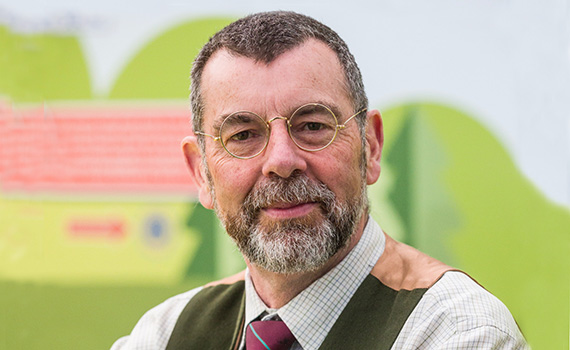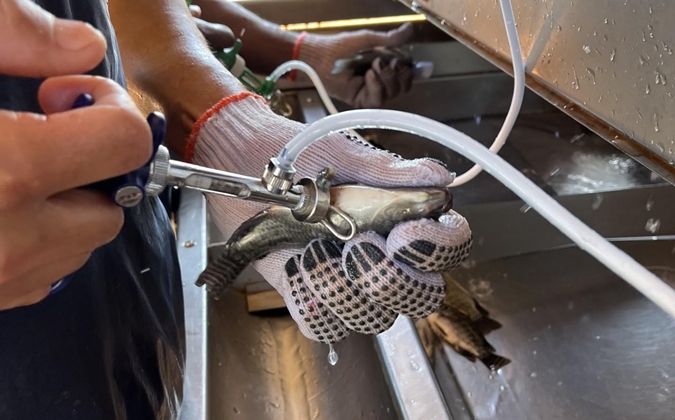
Scottish Sea Farms: How to reach zero antibiotics in commercial salmon farming
An interview with Ronnie Soutar, head of veterinary services, Scottish Sea Farms
Scottish Sea Farms reported zero antibiotics use in 2020 — but that clearly didn’t happen overnight, given your company has been below industry average in this respect for a number of years. How have you maintained this trajectory?
RS: I think what we’re doing is adhering to the basic principles of fish health: putting it right at the center of everything that we do when we’re planning and just going through everyday production.
The reduction in antibiotics comes as a natural consequence of that. We didn’t just say, “right, we’re going to get rid of antibiotics; how do we do that?” That was never the thought, because that wouldn’t be putting fish first. You don’t promote fish health by saying we’re not going to use a medicine; you do it by saying, “okay, we’re going to maximize the health of the fish and reduce stress on the fish.”
How big a challenge are bacterial diseases in your work?
RS: When it comes to bacterial disease, the most important thing is trying to avoid risky behavior. There is a real focus on antimicrobial resistance just now, obviously, because of human health. But I think in our sector, we don’t just focus on this — we focus on disease avoidance and health management more broadly.
Maybe that’s because our main challenges are not bacterial but parasitic. We spend a lot more time thinking about sea lice and amoeba, or else viruses. Bacteria have not been our main challenge for a long time, so I think we just have that mindset of managing fish health rather than trying to manage bacterial threat.
What role has vaccination played in reducing the use of antibiotic products?
RS: I’ve been in the sector long enough to remember when furunculosis was a huge issue. The measures we had to take at that point were all about surveillance, early intervention, managing antibiotic use well and then, of course, vaccination. When the furunculosis vaccine became available in the early 1990s, what a difference it made. And I think that experience means that our industry knows that vaccination is a really good thing.
The world has learned that in the last year with COVID-19, but we’ve been vaccine supporters for a long time, and compared to other livestock sectors. It’s just part of our resource now, and I think we use them well. We all have our smolt vaccinated against furunculosis and against other pathogens based on disease risk assessment.
The classic temptation, when you have a disease like furunculosis that you never see anymore, is to say “well there’s no threat; we’ll stop vaccinating.” Of course, we don’t see it because we vaccinate, so to stop vaccinating when you’ve got a disease under control is not wise.
The company has previously talked about a holistic approach to fish health contributing to reduced antibiotic use. How is that achieved in practice?
RS: Firstly, our fish health and welfare manager is from a nutrition background, so tends to take more of a holistic approach than a specific veterinary one. We are involved at senior management level, meaning it’s not a case of “we’re going to do this, then think about how fish health is going to be managed later.” It doesn’t work like that within our company.
On each of our sites — freshwater and marine — there will be someone designated as a fish health specialist, whose job is to carry out the routine surveillance to report back into the system. They’re in charge of things like lice and amoebic gill-disease monitoring but also watching out for any signs of bacterial disease.
Then, we have a support system built around not just veterinarians but fish health biologists and others, designed to support the farm staff in the management of fish health. I have always believed that if you look after health and welfare, then good production flows from that.
Fish are at high risk of disease in the juvenile stage. How have you improved management of disease in these early life stages without needing antibiotic interventions?
RS: We have had very supportive owners in terms of investment, and that has led to us opening a £58 million RAS hatchery in Oban. That was built from the design phase with biosecurity in mind, both in terms of water supply coming in and water management at every stage, from the hatchery through first feeding, to the growing and pre-smolt units. They’re all biosecure, and that’s implemented very strictly.
Because of the size of our production, not all the fish go to sea from those units at present, nor will do so for some time to come. But when we are moving fish into units that have a higher risk from bacteria, we’re able to take protective steps — for example, vaccinating against Yersinia before we move fish into tank systems with flow-through where they might have that challenge.
While you may be controlling bacterial pathogens successfully today, new species or variants can always arise. How do you stay on top of this?
RS: Our health and welfare plans are updated at every new crop, embedding the surveillance program and considering perceived risks.
We do a reasonable amount of polymerase chain reaction (PCR) sampling to determine which bacterial pathogens are present. Then we’ll follow up and monitor mortality levels and any other changes. If we see any indication that there might be an issue arising, then we will do traditional bacteriological swabbing which, unlike PCR, gives us the antibiogram that would allow treatment if we had to do it.
Though we’ve reached zero, and we have a default position of not using antibiotics, we would never let fish health be compromised. There’s always a balance there. No matter how hard you work, there’s an element of luck in not being challenged by bacterial disease. So that’s why the surveillance is constant. There’s always the possibility that you’d have to do something.
Posted on: September 22, 2021






